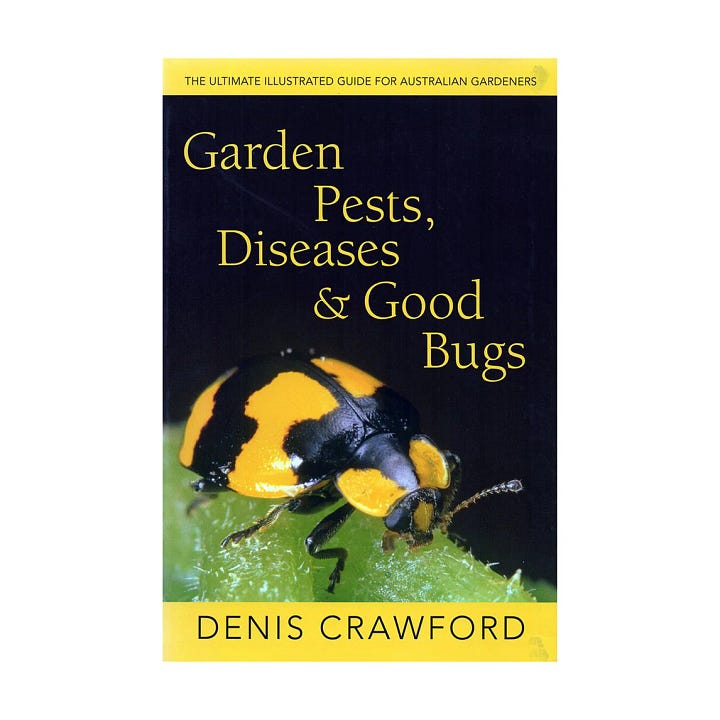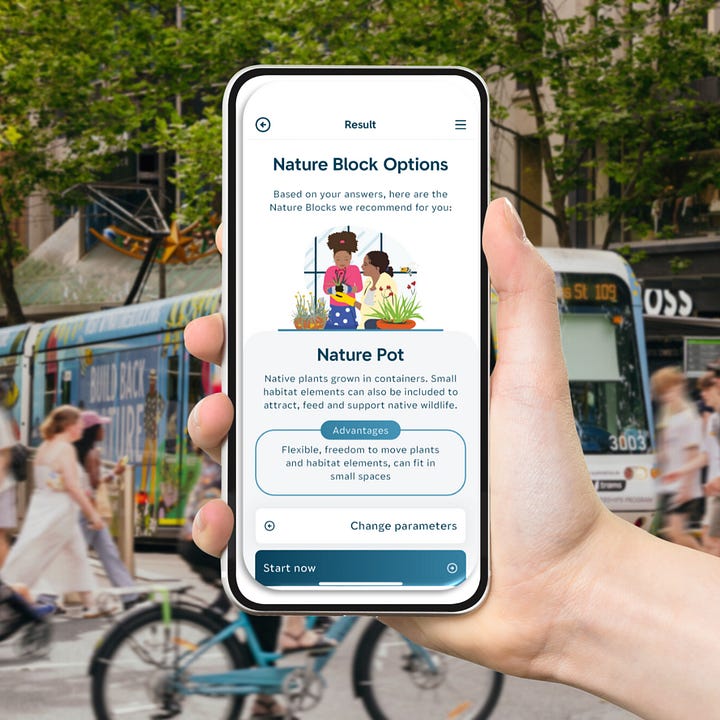If something I’ve shared has helped you in your garden or offered value in some way, and you’d like to contribute, you can Buy Me a Coffee.
You might’ve noticed today’s newsletter has a slightly different title. A tiny detour from our usual This Week in the Garden dispatch.
I’ve been rethinking how I put these together. I try to balance updates from my own garden with helpful how-tos for yours, plus all the interesting, garden-adjacent bits I find along the way. But I have the feeling the newsletters may be getting a smidge too long, trying to cram it all in.
Plus, some weeks (like this one) there’s not a whole lot to report. It’s been raining constantly, and I feel like I’d be saying the same things your heard last week.
So moving forward, here’s the plan.
This Week in the Garden will land in your inbox a couple of times a month, depending on what’s happening in the backyard. Garden Adjacent, the lighter, more link-filled edition, will have its own space every few weeks as I collect enough to make it worthwhile. The more research-heavy plant and wildlife guides will arrive when they’re ready, because I want those to be genuinely useful.
This week, it’s all about Garden Adjacent. Enjoy the scroll.
I joined The Diggers Club
I signed up last month and was irrationally excited when my free seasonal seed selection arrived last week. Wombok, fennel, and some sweet peas, all now tucked into the veggie beds. I have to say, something about joining a gardening club makes me feel like a more legitimate gardener.
Started in 1978 by Clive and Penny Blazey, it’s Australia’s oldest gardening club. These guys were pioneers in preserving heirloom seeds and promoting organic gardening. Membership gets you four packs of seeds each season, the magazine, access to all their guides, and (if you’re lucky enough to live near one) discounts at their garden sites.
This off-grid house in Cooroy
I’m obsessed with this off-grid home in the Noosa hinterland. Not just because it’s beautiful (which it is), but because of the garden it was built around. When it came time to build, they made it clear: the house had to work around the garden, not the other way around.
The owners, Robin and Wal, spent nearly a decade regenerating the land before even thinking about building a house. Workign with Landcare and planting for biodiversity. Slowly transforming an old farm into this stunning garden I wish my own looked like.
Pollinator houses
I picked up this pollinator house from Flow Hive. A quick solution for the local bees and insects before the weather starts to cool down. It’s made from recycled timber offcuts leftover from their honeybee hives. Which I like.
You can DIY these pretty easily (and I will next time), but a quick PSA: don’t grab one of those cheap ones from Bunnings or Amazon. They’re not built properly, too shallow, wrong materials, or just badly designed. One of the big issues is depth. For native bees, especially solitary species like reed bees and leafcutter bees, the nesting tunnels need to be at least 15cm deep. Otherwise, you can end up with a skewed sex ratio. The best DIY’s are on Aussie Bee and Backyard Buddies.
A Garden For Those in Cooler Climates
This magical cool-climate garden in the Southern Highlands was built from the ground up by Ali and his partner Wayne in the ’90s. Entirely self-taught, with no landscaping background. Inspiring for those of us who are just winging it.
Twenty garden rooms later. including a monastery garden shaped like a Celtic cross, and a walled garden with a massive three-metre-thick stone walls, it’s clear this garden was their life’s work. You can feel the love in every part. Sadly, Wayne passed away last year. It’s beautiful and a bit heartbreaking and well worth a quiet watch.


Garden Pests, Diseases & Good Bugs by Denis Crawford
I’ve been leaning into companion planting in the veggie garden. Basil and marigolds near the tomatoes. Leaving the dead cucumber vines for the lady beetles for natural pest control. I sort of know what I’m doing. But also, not really. So, I picked this up because I was tired of playing pest or friend with Google every time something weird showed up.
So far, this book super helpful. It tells you what the thing is, whether it’s a problem, and what (if anything) you should do about it. Sometimes the answer is, just leave it. Sometimes it’s here’s a way to manage it without coating everything in pesticides.
Nature Blocks app from Conservation Volunteers
This is a great little app from Conservation Volunteers Australia. For anyone with a garden a raised bed, a balcony, a verge, a courtyard, a pot with some soil. They’ll show you how to turn it into something useful to attract and support wildlife.
The app asks a few questions. What kind of space you’ve got, where you are, what you’re hoping to attract (insects, birds, frogs), then gives you a plan. Plants to buy, things to do, how to do them. It’s a solid starting point if you’ve been meaning to do something and didn’t know where to begin.
Marf’s Kitchen Garden
Martha has turned a tiny London courtyard into a full kitchen garden, and this reel is one of the most inspiring things I’ve seen all week. “I don’t want my garden to be finished because it is the doing I love so much.” I felt that.
Thanks for reading!
A few more from the archives of previous newsletters
Garden Inspo: If you find yourself in Melbourne, take a detour to the Skyline Carpark at Fed Square and check out this Test Garden. It’s part of the MapCo project for the new Laak Boorndap development. I love projects like this – gardens designed not just for aesthetics but for resilience, biodiversity, and people.
Buying: The Merry People Billie clogs. Life-changing. (You can spot them on my feet in the veggie garden pic further back.) They’re perfect for slipping on and off as I dart between the house and the garden. Sturdy enough for muddy days, comfortable enough for all-day wear, and, crucially, they actually look cute. I’m already dreaming about winter when they’ll replace my usual thongs and perpetually wet feet. (This is an affiliate link.)
Clever Invention - Cane Toad Tadpole Trap: Watergum’s Tadpole Trapping setup is clever – a pheromone-based lure that tricks cane toad tadpoles into a trap before they ever get a chance to grow into full-blown pests. It only targets cane toads, leaving native frogs unharmed. Watergum also runs online training courses if you want to get serious about cane toad control. Watch it in action here.
Buying: Lady Beetle larvae for natural pest control. You can buy them here. If you haven’t seen Lady Beetle larvae before, they have a fascinating lifecycle worth looking up.
Planting: Native herbs and greens from Bush to Bowl. They stock hard-to-find native herbs like Saltbush and Prostanthera (native mint) and ship Australia-wide. Definitely worth checking out if you’re looking to expand your edible garden with native options.
Watching: This reel on Lacewing eggs by Dr Kylie Soanes, my favourite wildlife and ecology expert. Lacewings are incredible garden allies. Watch it here.
Garden Tools: A stand-up weed puller & knee pads. Two unglamorous yet brilliant tools: a stand-up weed puller. I never thought I’d get so excited about a weed puller, but here we are. This one makes the back-breaking task of weeding feel almost… pleasant? And the comfy knee pads saving my knees from a lifetime of regret. Both from Hoselink, I’ve been buying their products for many years. Full transparency, these two are affiliate links.
Reading: Why Women Grow by Alice Vincent. This beautifully reflective book dives into the stories of women who cultivate, tend, and grow, exploring the emotional and cultural ties we have with the land. A must-read for those who love the therapeutic, grounding magic of gardening.
Watching: This incredible plant library. I stumbled across this visual delight on Instagram. Just wow. The dream to visit gardens like this around the world.







